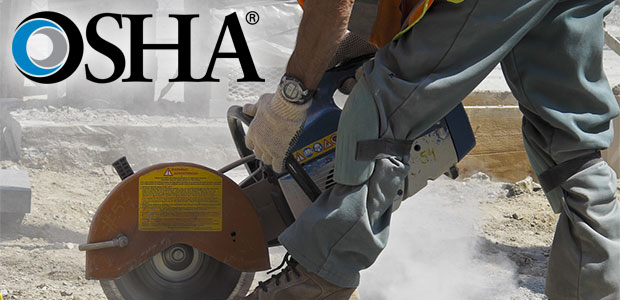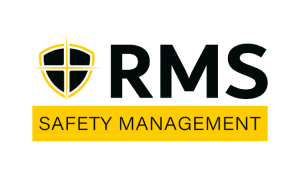
Did you know that silica is the most abundant mineral found in the earth’s crust? Other than soil, it’s also found in rock, sand, graphite, coal, concrete, asphalt, brick, clay, porcelain, and even in some roofing materials, abrasives, and paints! Today, about 2.3 million workers are exposed to silica on the job. Approximately 2 million of those employees are in the construction industry.
When silica is contained within a natural resource or product it’s harmless. However, when it becomes airborne it can be deadly if inhaled. The danger of silica inhalation has been known for longer than you probably realize. The US Department of Labor published a video in 1938 about the hazards of silica exposure (click here to see that video). Yes, 1938! That’s 32-years before OSHA was even founded. Research has linked silica to lung cancer, silicosis, chronic lung disease, and also kidney disease. If you would like to learn more about how silica effects your lungs, click here to watch a brief video.
OSHA’s first crack at establishing a silica rule for the construction industry came in 1974 when they published 1926.55. This standard basically prohibited employees from being exposed to various hazardous substances above limits that were sent in 1970. The limit for silica at that time was 250 mg/m3. The standard goes on to require use of engineering controls when feasible, but also allows employees to wear respirators when engineering controls are not feasible.
In 1996 OSHA began discussing the need to revise this standard and in 2013 they published a “Notice of Proposed Rulemaking”. After a lot of research and debate they finally published a new standard (1926.1153) on March 25, 2016. They are estimating this change to save more than 600 lives each year. While some feel this is a much needed step toward protecting American workers, many associations filed formal appeals due to their concern about the ability for some companies to meet the new requirements. Because of this resistance and the change of administrations due to the 2016 election, OSHA delayed their original effective date twice, but the new standard eventually became active on November 23, 2017. Upon allowing the standard to become effective, federal OSHA delayed their enforcement for 30-days and some state plans delayed their enforcement even further.
So are you ready to learn about all of the new changes you will need to implement? We are sure you are “jacked”, so let’s dive in! Here is a summary to help you absorb what you need to know:
- SCOPE: The standard has an “Action Level” of 25 mg/m3, averaged over an 8-hour shift. This means that companies whose employees are not exposed to this much silica are not covered by this standard. While it’s impossible to know the exact exposure level without conducting air sampling tests, OSHA has given employers some examples of tasks that would involve silica exposure under this limit. Those samples include: mixing mortar in a well ventilated area; pouring concrete footers, slabs, or foundation walls; and removing concrete formwork. Each of these tasks involve very little exposure. In addition, some drywall manufacturers have tested their products and proven exposure to be below OSHA’s Action Limit.
- CONTROL MEASURES: If employees perform tasks that are likely to be above the Action Level, then the employer must take one of two actions. The first option is for employers to implement an engineering control that has been pre-approved by OSHA. If this is done, then the newly established “Permissible Exposure Limit” (PEL) does not apply which means air sampling is not required. A list of eighteen (18) tasks that commonly involve silica exposure, along with their pre-approved engineering controls can be found in “Table 1” of the new standard. Click here to access the final standard and Table 1. Some examples of tasks that are likely to involve exposures above the Action Level and would therefore require action include: using masonry saws, handheld or vehicle mounted drills, grinders, jackhammers, rotary hammers, milling machinery or rotary drills; finishing drywall with silica containing material; operating earthmoving equipment; and heavy demolition of masonry structures. The second option is to conduct air sampling for each task to determine the exact exposure level. OSHA’s new PEL is now 50 mg/m3 averaged over an 8-hour work shift (80% less than what it was previously). If tests show that employees are exposed above the PEL then adequate PPE shall be provided and worn. All air sampling must be analyzed by labs that meet the qualification and use methods identified in Appendix A of the standard.
- EXPOSURE CONTROL PLAN: Regardless of which option a company goes with, if their employees perform tasks that are above the Action Limit they will be required to develop and implement a written “Silica Exposure Control Plan”. This plan must also identify a Competent Person who will be responsible for implementation and must conduct frequent and regular inspections of affected jobsites. The plan must also identify all tasks that involve silica exposure, the methods used to protect workers, and include each of the elements below. A formal review of the plan is required annually.
- EMPLOYEE TRAINING: All employees who are exposed above the Action Level must be trained on the hazards of silica, tasks that may involve exposure, methods used to limit exposure, description of the medical surveillance program, identity of the Competent Person identified in the Exposure Control Plan, and how to obtain a copy of the plan.
- RESTRICTING ACCESS: Areas where high concentrations of silica may be present must be restricted in order to prevent individuals who are unprotected from entering the area.
- HOUSEKEEPING: Housekeeping practices that may increase exposure levels shall be avoided when alternative methods are feasible. For example, using water or vacuums to clean would be preferred over using compressed air or dry sweeping/brushing.
- MEDICAL SURVEILLANCE: Any employee who is required to wear a respirator for 30 or more days per year due to silica exposures must be entered into a medical surveillance program. This program shall consist of a chest x-ray and lung function test that shall be conducted within 30-days from assignment. The physician must issue a written opinion at the conclusion of each exam that identifies the date of the exam, a statement that the exam met the requirements of the standard, and any recommended limitations on the employee’s use of a respirator. These tests are required to occur prior to initial use and at least once every three (3) years.
- RECORDKEEPING: All documentation associated with air sampling, exposure incidents, and medical exams for silica shall be maintained on file.
The information above gives you a brief understanding of these new changes. For a more comprehensive grasp, we recommend reading the full standard. However, here are a few additional details that may help clarify some questions you may have:
- Q1: Can a company just skip the engineering controls and require PPE in order to avoid the need to purchase costly equipment? OSHA says that the engineering controls listed in Table 1 are to be implemented unless the employer can demonstrate they are not feasible. If this can be done, then the employer may skip the engineering controls but air monitoring must be performed as required.
- Q2: If an employee performs two or more tasks that are listed on Table 1, how is the exposure time supposed to be calculated? Add the total time for all tasks listed in Table 1 that are performed in the same day. For example, if someone jackhammers concrete for 2-hours and then cuts block for another 3-hours, their exposure time would be 5-hours and therefore the precautions listed in the “> 4 Hours / Shift” column (i.e. the right column) must be followed.
- Q3: What if an employee performs a task that is not listed in Table 1 and it’s not specifically named as an exempted task? Air monitoring must be conducted for that task as required.
- Q4: How often does air monitoring need to be conducted? Only once if the initial results are below the “Action Level” of 25 mg/m3 (as long as conditions don’t change that may increase exposure levels). If the results are above the Action Level of 25 mg/m3 but below the PEL of 50 mg/m3, then additional monitoring must be conducted within 6-months to confirm the results. If results are ever above the PEL of 50 mg/m3, then additional monitoring must be conducted every 3-months. Monitoring can stop if two (2) subsequent tests taken 7-days to 6-months apart are both under the “Action Level”.
We hope this helps you gain your bearings and begin planning how you will implement these requirements. If you need help, let us know!

